

 The South African
The South African
After the fall of Johannesburg in June 1900, Lord Roberts needed a well-known and respected person to assume responsibility for the defence of the Modderfontein factory and to establish and train the South African Constabulary as a police force to control and maintain law and order in the Boer republics of the Transvaal and Orange Free State, then under British command. The recently relieved hero of the siege of Mafeking was seen as an ideal person for the task and Baden-Powell was duly appointed.
Robert Stephenson Smyth Baden Powell (1857-1941), later to become Baron Baden-Powell of Gilwell, was an English soldier born in London. Son of the Reverend Professor Baden-Powell of Oxford, he had as his godfather Robert Stephenson, son of the father of railways. On his mother's side, Baden-Powell was a descendant of Captain John Smith (1579-1631) of Virginia fame. Until he was nearly twelve, he lived an outdoor life, close to nature. Then he went to a preparatory school and, in 1871, he and his younger brother went to the Charterhouse School.
Baden-Powell joined the 13th Hussars in 1876 and served with them in India, Afghanistan and South Africa. He was Assistant Military Secretary in South Africa from 1887 to 1889 and then in Malta from 1890 to 1893. In 1895, he served as commander of the native levies in Ashanti. He was then promoted to the command of the 5th Dragoon Cuards, also in 1895, and then returned to southern Africa where he served with distinction in the Matabele Campaign from 1896 to 1897, showing particular flare and ingenuity in coping with the rugged Rhodesian terrain.
In the Anglo-Boer War (1899-1902), Baden-Powell won great popularity, and indeed world fame, by his brilliant defence of Mafeking (Mafikeng), a small town situated at the confluence of the borders of the Transvaal, the Northern Cape and Bechuanaland (Botswana). Mafeking was of strategic importance as the key to the interior of southern Africa. In spite of famine and sickness, and with a force of 1 200 men (outnumbered eight to one), he held the town for 215 days until its relief in May 1900. In recognition of his leadership, prowess and defensive ability, he was promoted to the rank of major-general and then given the task of organizing and commanding the South African Constabulary. He was appointed inspector-general of the South African Constabulary in 1900. (After the war, from 1903 to 1907, he would serve as inspector-general of the Sooth African Army Cavalry because of his efficient work.)
After Lord Roberts had captured Johannesburg on 31 May 1900, he encamped his northern force along the Jukskei River to rest and draw amm(Inition for the march on Pretoria. In the meantime, he ordered the 3rd Cavalry Brigade to capture the Modderfontein Dynamite Factory from its defender, Field-Cornet Duvenage. After putting up a fierce resistance, which lasted from 09.00 to 14.00, Duvenage was driven out. He escaped to the Eastern Transvaal and was eventually captured at Middelburg and taken to Ceylon. After the action at Modderfontein the Boers were deprived of their munitions and Explosives factory, but it would be another two years before the war was over.
Lord Roberts needed a well-known and respected person to assume responsibility for the defence of the Modderfontein factory and to establish and train the South African Constabulary as a police force to control and maintain law and order in the Boer republics of the Transvaal and Orange Free State, then under British command. The recently relieved hero of the siege of Mafeking was seen as an ideal person for the task and Baden-Powell was duly appointed. Before taking up the appointment, however, he was asked to assist in the campaign against General de Wet in the thick bush country between Rustenburg and Warmbaths.
Upon his return to Modderfontein, Baden-Powell commandeered as his living quarters the factory manager's house (which had been vacated by Franz Hoenig who had returned to Austria). He also took over the casino building (now the Modderfontein Town Hall) as his officers' mess, and the Nitric Acid Mixing Station as stables for the horses of the South African Constabulary. All empty single quarters and houses were used to accommodate his troops and at times he also made use of tents. He had an office building erected near the stables and it was from there that he ran the constabulary. This building was used later as the offices of the superintendent of the No 1 Ammonia Plant. Baden-Powell and his men made liberal use of the stores and equipment at the factory but, in the end, returned all equipment to the factory management.
Before he left Modderfontein to pursue General de Wet, Baden-Powell had given instructions for the construction of a fort (or block-house) in accordance with General Kitchener's overall defence plan to cope with commando warfare. He also asked for the erection of barbed wire fences around the factories and housing areas to restrict the movements of Boer commandos which were still active in the surrounding districts. In addition, trenches and other defences were planned and laid out, to be constructed by Captain Godsen-Godsen in his absence.
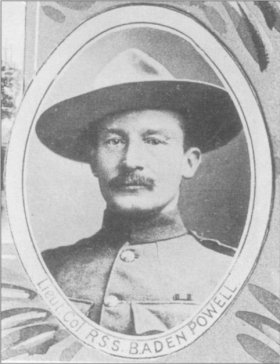
When Baden-Powell returned to Modderfontein, he immediately approved of the work that had been done on the defences and set about organizing the training of the troops for the defence of the factory. At the same time, the first contingents of carefully selected volunteers from other army units who were to be trained in the formation of the South African Constabulary began to arrive. Baden-Powell had specified that these troops should be fit and healthy, have good eyesight and that they should be good horsemen and marksmen. A rigorous training programme was instituted, which made full use of the buffer zones around the factory for training in horsemanship. Target practice and .303 inch musketry training was conducted at the old Boer shooting range on the 'Shooting Range Farm', just south-east of the Johannesburg gate. The range was laid out with target butts with ranges of up to 1 000 yards (914 metres). Training in pistol shooting, using Webly .38 revolvers, was also provided.
The varying terrain of Modderfontein's topography proved ideal for training in horsemanship, which was based largely on the best methods of cavalry training used in the British Army and the best methods of horse care and grooming. Instruction was also given in basic veterinary care and in coping with common equine ailments, especially South African horse sickness. Practical training included the shoeing of horses and training was given in gymkhana techniques such as 'tent pegging' with lances. Long distance route marches were undertaken to Dam III, Swanepoel's bridge over the Jukskei River on the road to Johannesburg, to Zourfontein Station (now Kempton Park), Halfway House and to Kaalfontein Station. Night riding was done to Dam III and back. All of this was done to form a bond between rider and mount.
Baden-Powell used the upstairs lounge in the casino as a training room for his officers and men. There he taught them how to run a police station and charge office, as well as how to implement the current martial, civil and criminal laws and also how to deal with law court procedures. The uniforms that he selected for the constables consisted of an Australian slouch hat with the right-hand brim turned up and fixed to the crown, a khaki tunic with matching riding breeches worn with brown boots and spurs and 'wind-round' putties. A summer camp uniform, consisting of a khaki shirt with two breast pockets and shoulder tabs, to be worn with khaki pith-helmets, was also approved as part of the uniform. (It is interesting to note that, within the next few years, Baden-Powell would model the uniform of the Boy Scout movement, with a distinctive neck scarf and the flat brimmed hat with a pinched-up crown, on this summer camp uniform.)
When the troops had completed their training, they were grouped into pairs, each supplemented by two black constables, and equipped with new uniforms and their horses. They were then assigned to each of the districts in the conquered territories, with instructions to maintain law and order there and to support the district commissioners. Officers were trained to provide the necessary command structure and to maintain a high standard of efficiency and discipline. These policemen became highly respected and later provided a firm foundation upon which to build the South African Police.
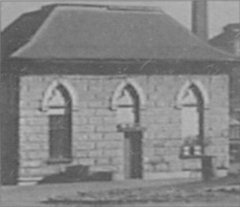
As the pace of training and posting out from Modderfontein of South African Constabulary personnel increased, more districts were protected by police and General Baden-Powell made a point of visiting them and inspecting their activities and establishments. The British had captured considerable quantities of railway rolling stock after the fall of Pretoria and General Kitchener assigned to General Baden-Powell the Transvaal's State Secretary's Coach, which had previously been used by Dr Leyds and General Smuts. Baden-Powell used this coach extensively during his regular inspection trips to distant constabulary outposts in the Orange Free State and the newly conquered districts of the Transvaal. An arrangement existed with the recently reinstated railway system that this coach could be shuttled through any system as required by the general.
Eventually, after Baden-Powell had completed his two main tasks at Modderfontein, he donated the coach to the factory. It was subsequently used for several years to provide transport between Modderfontein and Kempton Park Station for employees and their families. Later, its wheels were removed and it was installed as the Bowling Green Pavilion at the sports grounds and fitted with a suitable plaque describing its history. In 1959, a second bowling green was constructed and a larger pavilion was required. The factory manager at the time, Mr E K Gibson, who was also a keen Scout, obtained permission from the board of directors to donate the coach to the scouting establishment at Gilwell Estate in Florida, western Witwatersrand, where it has been beautifully restored. Today it is the centre of attraction there and highly regarded because of its tangible association with Lord Baden-Powell, the founder of the Boy Scout movement.
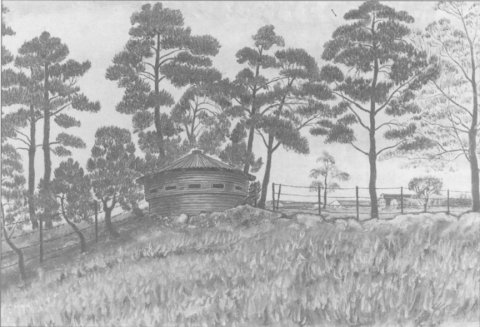
The interim Milner Government approved of the appointment of General Baden-Powell to establish the South African Constabulary of 6 000 men, consisting of selected British soldiers who wanted to remain in South Africa after the war. Later, many of these men became prominent farmers and businessmen. In 1906, the name of the South African Constabulary was changed to the 'Transvaal and Orange Free State Police'. In 1913, the South African provincial police forces were amalgamated to form the South African Police (SAP).
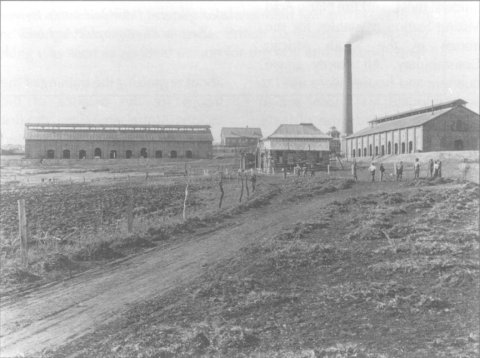
It was partly as a result of his observations of the responsible actions of children under stress during the siege of Mafeking, and subsequent observations throughout the British Empire, that Baden-Powell decided to form the Boys Scouts and Girl Guides movements, including the Cubs and Brownies. His aim was to teach children to become self reliant, capable, honest, civil minded, upright and responsible people while working for specific qualifications suited to their particular gifts and talents. Many parallel movements, such as the Voortrekkers in South Africa, the Boys Brigade, and the Jewish Scouts are based on these sound principles and countless children have found a firm footing in life through these movements. Based on his initials, 'B P' came the Scouts' motto, 'Be Prepared', which has been their inspiration and source of self confidence and strength.
While stationed at Modderfontein, Baden-Powell often visited Dam III, where he pointed out a particular camp site south-west of the crossroad. When the Modderfontein Scouts were established, they made full use of this site and many jamborees were held here with great enjoyment and satisfaction to the participants. (This site was put out of bounds when Modderfontein was declared a national key point). The general also spent many weekends with Alfred Beit on the Frankenwald Estate on the western side of Modderfontein, hunting small game by day and spending the evenings in the shooting lodge. Frankenwald was later purchased by the company.
Lord Baden-Powell enjoyed reading the books and short stories of Rudyard Kipling, which were based on his experiences in India. Kipling had a knack of characterizing certain animal types in India in such a way that they became universally accepted. These were the wolf, the bear, the leopard, the mongoose, the python, the tiger, and so on. Each was provided with an appropriate, personified name that was imbued with common-sense and the wisdom of the Far East. These stories soon gained popularity throughout the world. With great success, Baden-Powell used Kipling's characters in his Cub organization and in many specific Cub and Scout programmes.
Always interested in boys and their welfare, Baden-Powell wrote, some years before his retirement from the army in 1910, his Aids to Scouting, which was eagerly read by large numbers of boys. The first experimental Boy Scouts camp was held on Brownsea Island in Pool Harbour, England, in 1907. It proved so successful that he decided on more extensive operations, which spread rapidly in Britain and to other countries and eventually formed the world-wide Boy Scouts organization which has played a great part in the physical and moral development of youth in all countries. In the Boy Scout movement, Baden-Powell was the Chief Scout. In 1910, with the help of his sister, Agnes, Baden-Powell founded a parallel organization among girls - the Girl Guides. It is said that the Girl Guide movement is at least partly modelled on Florence Nightingale and Emily Hobhouse, both of whom Baden-Powell admired and respected.
Lord Baden-Powell was knighted in 1901 and raised to the peerage in 1929. He had many talents and exhibited sculpture in the royal academy in 1907. He was promoted to Lieutenant-General commanding the Northumbrian Territorial Division of the north of England in 1908. In 1920 he retired from the army and in 1937, he received the Order of Merit. He devoted the rest of his life to the Boy Scout and Girl Guide movements with the help of his wife, who survived him by many years. Both visited South Africa frequently. Baden-Powell died on 8 January 1941 - at his home in Kenya and was buried with full military honours.
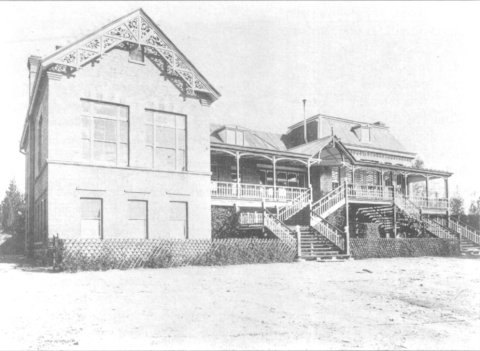
His publications include: Pig-sticking or Hog-hunting (1889, revised in 1924); Vedette (1890); Cavalry Instruction (1895); The Matabele Campaign (1896); Sport in War (1900); Scouting for Boys (1908); Quick Training for War (1914); My Adventures as a Spy (1915); Indian Memories (1915); The Wolf-Cubs Handbook (1916); Girl Guiding (1917); Aids to Scoutmastership (1920); Old Wolf's Favourites (1921); What Scouts Can Do (1921); Raving to Success (1922); Life's Songs (1927); Scouting and Youth Movements(1929); Lessons from the Varsity of Life (1933); Adventuring to Manhood (1937). These books have had a profound effect on countlessboys and girls, as well as adults and soldiers throughout the world.
In later years, Lord Baden-Powell was appointed vice-president of the English-Speaking Union, and at this time expressed his admiration for Lawrence of Arabia as having those qualities that a fully trained Boy Scout should have: coping in extremely adverse conditions of hardship and privation but showing the leadership and endurance to win through and achieve his objectives in the end.
Because of its proud association with the founder of the Boy Scout movement, Modderfontein has always been a keen centre of Scouting activity and can trace its history back to 1911. It may be the third Scout Group established in South Africa. It was officially registered in Scout Headquarters in 1913. At first, the Scouts met in various company buildings, which included the upstairs hay-loft of the manager's riding horse stables (now the double storey house at the corner of Main and High streets) and the Church Hall at the corner of Main Street and Nobel Avenue.
Most camping and camp training was done on the north shores of Dam I and at the camp site at Dam Ill. Theist North Rand Scouts and Cubs also camped out in the areas easily accessible around Modderfontein, such as Witpoortjie, Luipaardsvlei, GilIwell Estate Florida, the Magaliesburg Mountains, Hartebeespoort Dam, Fountains Valley Pretoria, Benoni Dam, Heidelberg Kloof and the Vaal River at Vereeniging. In the 1920s, 30s and 40s, camping out was much safer than it is today and the only real hazard arose from tick-bite fever.
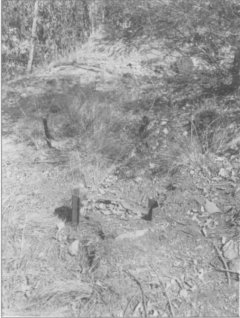
In 1933 funds were collected and foundations laid for the present Scout Hall which was completed in September 1934. It was built by a Mr Nielsen with volunteer help from the Scouts, their parents and the Modderfontein Scout Committee. Mr Joe Fredericks, the factory electrical foreman, and Mr J Brodie had the electric power and lighting installed. Mr Gardner and Mr Carnell installed the stove, sink and drain in the kitchen. Two flag poles were erected opposite the front verandah to fly the two official South African flags, and a special fence and gate were erected around the building. Later, in the 1960s, a Cub building was also erected in the grounds. When the camp site at Dam III was closed, the company made the old 'German' School grounds available as a camping site adjoining the Scout Hall and Dam I. This site has been used to advantage, not only by local Baden-Powell organisations, but also from those of the surrounding districts.
The Modderfontein Scouts have traditionally been Land Scouts, but during the 1930s and 40s a Sea Scout Troop was formed and operated on Dam III in a motor boat donated by Mr Dick Goodman, which had been converted to a rowing boat. They wore navy-blue uniforms and sailor hats.
During the Second World War, when there was a shortage of glass, the Scouts and Cubs regularly turned out on Saturday mornings with the trek cart and systematically collected bottles throughout the village. Medicine bottles were delivered to the hospital dispenser and the other glass was sold for the soldiers' relief fund. On other occasions, books and magazines would be collected and delivered to the hospital matron to be distributed among the patients.
In the 1930s, the Scouts attended two Jamborees - one in 1936 in East London which was attended by Lord Baden-Powell, and another at Lourenço Marques (present-day Maputo) in Portuguese East Africa (Mozambique). One of the Scouts, Royden Archdeacon, was awarded the Scouts Silver Medal in the 1950s when he had saved the life of a schoolboy, Vernon van Niekerk, after he had been bitten by a rinkhals snake. Royden had cauterized the wound and sucked the poison out by mouth, and Dr Dalton from the Modderfontein Hospital confirmed that this had saved the boy's life. The troop has also produced many Rover and Springbok Scouts.
Scout Masters and leaders at the factory included the following:
Scout Master Rev A Cowgill and his assistant, J C Fraser;
T W Drummond; E W Reeves and his assistant, Mr Cook;
Mr E Knights and his assistant, Mr Hamilton; Mr Mackin;
Map Reading, Mr Orpen;
Metal Work, Mr Simpson; Mr Eric Gibson; Mr Watt; Mr V Newton;
Mr R Hill; Mr G Beech and Mr J Develin
A long standing chairman of the Scouts Committee was Chief
Engineer Mr George King. One of the longest contributors to the Cub
movement at Modderfontein was Mr Frank Westoll. Many ladies
had also rendered sterling work by running the various Cub, Girl
Guide and Brownie organisations and these include Francis Winning,
Cathy Klerck, Violet Hobbs, Eleanor Hobbs, Ethel Hobbs,
Marjorie Jeffrey and Mrs E K Gibson, who was, for a long time,
the chairlady of the Girl Guides.
Mr Piet de Preez was a prime mover in the local Voortrekker
organisation, and Mr Len Wallace controlled the Boys' Brigade for
many years
Sources
A list of Baden-Powell's written works was obtained from the Scout Archives of the Dynamite Company Museum at Modderfontein and Everyman's Encyclopedia, Vol 1, provided an outline of Baden-Powell's career.
Return to Journal Index OR Society's Home page
South African Military History Society / scribe@samilitaryhistory.org